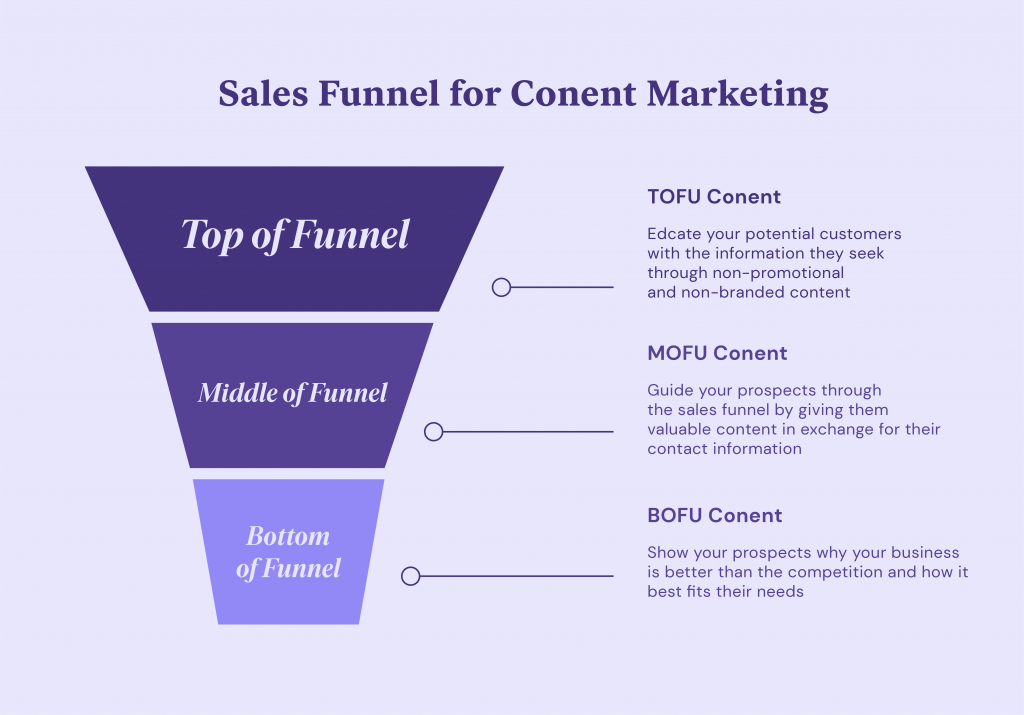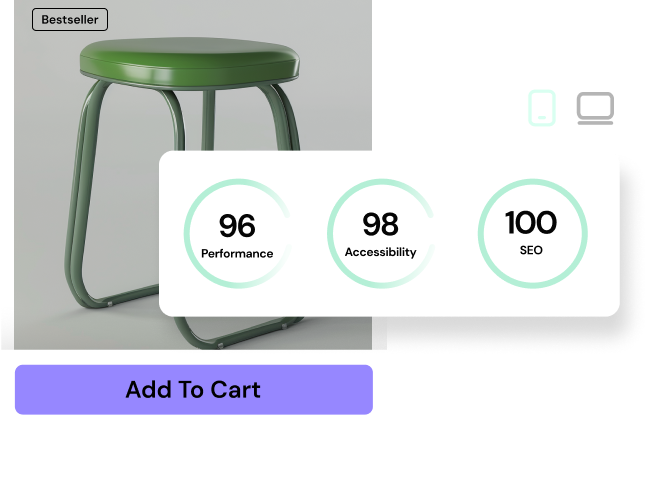Table of Contents
Content marketing has become indispensable for businesses of all sizes. Why? Because it works! It can help you:
- Boost Brand Awareness: Reach a wider audience and make your brand more memorable.
- Become a Thought Leader: Demonstrate your knowledge, expertise, and unique perspective.
- Build Trust and Loyalty: Provide genuine value to gain a loyal following.
- Drive Leads and Sales: Guide potential customers down the sales funnel.
- Improve Search Engine Rankings: Attract organic traffic to your website.
In this comprehensive guide, we’ll explore the world of content marketing and explain everything you need to know to create a successful strategy for your brand in 2024. Let’s get started!
Why Content Marketing Matters
Increased Brand Awareness and Visibility
Getting noticed online is tougher than ever. Content marketing offers a way to cut through the noise and reach a wider audience. Each blog post, infographic, or video you create serves as another piece of your brand’s identity, expanding its reach across search engines, social media, and other channels.

Consistent, high-quality content not only gets your brand seen but also works to create a recognizable and memorable impression. When people see your content regularly, they begin to associate it with your brand’s values, voice, and visual style. This builds stronger brand awareness and helps you stand out in a sea of competitors.
Establishing Thought Leadership
Content marketing is your opportunity to showcase your expertise within your industry. By consistently publishing in-depth blog posts, insightful guides, and well-researched whitepapers on relevant topics, you position yourself as a knowledgeable and reliable source of information. This helps you gain recognition as an authority figure in your niche.
When potential customers see you as a thought leader, they are more likely to trust your recommendations and choose your services or products. Publishing on your website and other industry-specific platforms strengthens your authority and helps you build a thought leadership reputation over time.

Building Trust and Relationships
At its core, content marketing is about building relationships with your target audience, unlike traditional advertising, where the focus is often on pushing a product or service, content marketing centers on providing genuine value. By offering informative articles, helpful tutorials, or entertaining content, you’re giving something back to your audience without asking for anything in return.
This approach fosters trust. People are more likely to do business with a brand they feel understands their needs and has consistently offered helpful information or solutions. Moreover, when your content addresses customer pain points or answers common questions, it shows you genuinely care about your audience, further strengthening that bond.
Cost-Effective Lead Generation
While content marketing requires an investment of time and resources, it often proves more cost-effective in the long run compared to traditional advertising methods like paid ads. Quality content can attract a steady stream of organic traffic to your website and generate leads for your business.
As your content gains authority, it continues to drive traffic even after it’s been published, unlike paid ads that stop working the moment you stop spending money. Moreover, content can be repurposed into various formats (e.g., turning a blog post into an infographic), maximizing its returns over time.
SEO Benefits and Organic Traffic
Content marketing and SEO (search engine optimization) go hand-in-hand. Creating high-quality content that aligns with what your target audience is searching for is a critical component of boosting your visibility in search engine results pages (SERPs).
Here’s how content marketing improves your SEO:
- Keywords and Search Intent: By thoughtfully incorporating relevant keywords throughout your content, you signal to search engines what your content is about. However, it’s crucial to target keywords that align with the user’s search intent – the why behind their search – to attract the right kind of traffic.
- Backlinks from Authoritative Sites: When other reputable websites link back to your content, it acts as a “vote of confidence” in the eyes of search engines. This builds your website’s authority and can push your pages higher in the rankings.
- Dwell Time and Engagement: Search engines track how long users stay on your website and how they interact with your content. Engaging, informative content that keeps people scrolling, clicking, and reading sends positive signals that your site is valuable and relevant.
As you consistently publish valuable content, search engines begin to recognize your website as a trusted source, leading to higher rankings and increased organic traffic. That means more potential customers discover your brand without the need to pay for ads constantly.
Building Your Content Marketing Strategy
A well-defined content marketing strategy is the foundation of any successful content initiative. Unlike simply churning out random content, this section will emphasize the importance of a targeted, goal-oriented approach.
Understanding Your Target Audience
The cornerstone of effective content marketing is knowing exactly who you’re trying to reach. Before creating anything, it’s essential to have a deep understanding of your target audience. This means diving into their:
- Demographics: Age, gender, location, occupation, income level
- Interests and Pain Points: What challenges do they face? What are their hobbies, passions, and needs?
- Online Behaviors: Which social platforms do they use? What type of content do they engage with? Where do they search for information?
To gather this information, you can use tools like:
- Customer Surveys and Interviews: Get direct feedback from your existing customers or your ideal target audience.
- Website Analytics: Examine data to understand user demographics and their journey through your website.
- Social Media Insights: Analyze engagement patterns to determine your audience’s preferred content formats and topics.
By creating detailed customer personas (fictional representations of your ideal customers), you can guide your content creation efforts and ensure that each piece resonates with the right people.
Setting Measurable Goals
Content marketing should align seamlessly with your overall business objectives. Before you start creating, ask yourself the following:
What outcomes are you hoping to achieve with content marketing? Some examples include:
- Drive more website traffic
- Increase brand awareness
- Generate quality leads
- Improve search engine rankings
- Boost customer loyalty and retention
- Position yourself as a thought leader
By setting clear, measurable goals, you can track the effectiveness of your content marketing efforts and make data-driven adjustments to improve your results over time. It’s helpful to use the SMART framework to set specific, measurable, achievable, relevant, and time-bound goals.
For example, instead of a vague goal like “Increase website traffic,” you could have a SMART goal like “Increase organic search traffic by 20% within the next six months.”
Determining Content Types
Content marketing isn’t a one-size-fits-all solution. Choosing the right content types is crucial for engaging your target audience. Here’s a breakdown of some of the most popular options:
- Blog Posts are the backbone of content marketing, providing in-depth explorations of topics relevant to your audience. They are great for boosting SEO and establishing thought leadership. (Remember, the Elementor website builder offers easy creation of beautiful blog posts with intuitive customization options.)
- Videos: Video is a highly engaging and shareable format. Consider explainer videos, product demos, customer testimonials, or behind-the-scenes content that aligns with your brand voice.
- Infographics: A powerful way to deliver complex data or statistics visually. Infographics are easily digestible and highly shareable on social media. (Elementor website builder makes it simple to add stylish infographics to your pages).
- Podcasts: Reach your audience while they’re on the go. Podcasts allow for in-depth conversations and can help establish your brand as an authority in your niche.
- Webinars: Host live webinars to provide valuable information and connect with your audience in real time. Webinars offer excellent lead generation potential.
- Social Media Content: While not long-form content, curated and creative social media posts keep your audience engaged and promote your blog articles, videos, and other larger content pieces.
Make sure to limit yourself to more than one or two formats. Experimenting with different content types helps you identify what resonates best with your audience and allows you to distribute your content effectively across diverse platforms.
Keyword Research
Keyword research is the process of identifying the words and phrases your target audience types into search engines when looking for information related to your business. Understanding these terms is essential for creating content that aligns with what people are searching for and ultimately attracting organic traffic.
Here’s why keyword research matters:
- Understanding User Intent: Keywords help you decipher the reason behind a user’s search. Are they looking for information, comparing products, or ready to buy? Targeting the right keywords ensures your content meets their needs at each stage of their journey.
- SEO Optimization: Incorporating the right keywords into your content in a natural, non-spammy way signals to search engines that your website is relevant to those searches. This can improve your search engine rankings.
There are several tools that help with keyword research:
- Paid Tools: Options like Ahrefs, Semrush, or Moz offer in-depth keyword analysis, competitor research, and track your keyword rankings
- Free Tools: Google Keyword Planner, Google Search Console, Ubersuggest, and Answer the Public gives you insights into search volume, keyword difficulty, and related search queries.
When choosing keywords, aim for a mix of high-volume and long-tail keywords (more specific, multi-word phrases with lower competition). This strategy will help you attract both a broader audience and those searching for answers to very specific questions.
Content Calendar and Planning
A well-structured content calendar is a content marketer’s best friend. It helps you stay on track, maintain consistency, and ensure your content aligns with your goals. Here’s what your content calendar might include:
- Publication Dates: Determine how often you’ll publish (daily, weekly, biweekly, etc.) and set deadlines for each piece of content.
- Topics and Keywords: List out topics along with their targeted keywords in advance. This helps plan your content around different stages of the customer journey and fill keyword gaps over time.
- Content Formats: Plan out a diverse mix of content types to keep your audience engaged.
- Channels and Promotion: Strategically chart how each piece of content will be distributed across different channels, including social media, email marketing, and others.
- Ownership and Assignments: If you’re working as part of a team, assign clear responsibility for content creation, editing, and distribution.
There are many tools to manage your content calendar:
- Spreadsheets: A simple solution, especially for small teams, allowing customization for your specific needs.
- Project Management Tools: Platforms like Asana, Trello, or Monday.com offer comprehensive task management, collaboration features, and customizable workflows tailored to content teams.
- Content Calendar Plugins: If you’re using WordPress, plugins like Editorial Calendar provide visual scheduling directly within your website’s dashboard (Elementor website builder integrates seamlessly with many useful WordPress plugins).
Consistency is key! A content calendar fosters discipline and ensures your content marketing engine continues to deliver results for your business.
The Content Creation Workflow
Ideation and Topic Generation
The cornerstone of any content strategy is generating compelling ideas that resonate with your target audience. Here are some ways to brainstorm fresh content topics:
- Answer Audience Questions: Use audience research to identify common pain points, questions, and interests within your niche. Tools like Quora or “Answer the Public” can help.
- Leverage Keyword Research: Your keyword research tools will offer a wealth of ideas surrounding what people are actively searching for.
- Repurpose Existing Content: Can you expand a popular blog post into an infographic? Or turn a webinar recording into a series of social media posts?
- Monitor Competitors: Analyze what’s working well for your competitors (be sure to add your own unique spin).
- Stay Current on Industry Trends: Incorporate news and timely topics to demonstrate your expertise and relevance.
Crafting High-Quality Content
Once you have your topic, it’s time to create content that not only informs but also genuinely engages your audience. Here are the essential elements:
- Compelling Headlines: Your headline is the first impression. Make it attention-grabbing and use keywords strategically.
- Strong Hook and Introduction: Capture your reader’s interest immediately and clearly convey what value your content provides.
- Readable Formatting and Structure: Use short paragraphs, subheadings, and bullet points for easy readability. Highlight key takeaways.
- Storytelling: Infuse your content with anecdotes, examples, and relatable elements to make it memorable.
- Calls to Action (CTA): Guide your audience toward the next step, whether it’s reading another article, subscribing to your newsletter, or making a purchase.
Optimization for Search Engines (SEO)
Creating great content is only half the battle. Ensuring it can be found easily in search engines is crucial for attracting organic traffic. Here are some basic on-page SEO techniques to implement:
- Keyword Placement: Strategically incorporate your target keywords throughout the content. Include them in the title, headings, body text, image alt tags (explaining what your images are about), and meta descriptions (the snippets of text under search results). Avoid keyword stuffing, as it can hurt your rankings.
- Internal Linking: Link to other relevant content on your website to help visitors navigate and search engines understand your site’s structure.
- URL Structure: Use clear, keyword-rich URLs that accurately reflect the page content.
- Content-Length: While there’s no perfect word count, longer, in-depth content (usually 1500+ words) often performs better as it provides more value and lets search engines better understand the content’s focus.
- Mobile Optimization: Ensure your content looks great and loads quickly on mobile devices, as a significant amount of search happens on smartphones. (Remember, Elementor Hosting is optimized for speed! Google Cloud Platform C2 servers, Cloudflare’s Enterprise CDN, and various caching mechanisms ensure your content loads swiftly for a great user experience).
The Power of Visuals
In an age of short attention spans, visual content plays a pivotal role in engaging audiences and breaking through the noise. Here’s why it matters:
- Improved Readability: Images, videos, and infographics break up text, making your content easier to digest and more visually appealing.
- Engagement Boost: Visuals are highly shareable and can increase dwell time on your website, signaling to search engines that your content is high-quality.
- Complex Idea Simplification: Infographics and charts can effectively explain complex data or processes in an easy-to-understand manner.
- Brand Reinforcement: Use consistent visual elements like colors, fonts, and design styles across your content to build strong brand recognition.
Here are some ways to incorporate visuals into your content strategy:
- Original Images: Invest in high-quality photography or create custom graphics (Elementor website builder’s media library and design tools make this easy).
- Stock Photos and Videos: If resources are limited, utilize curated stock libraries, ensuring the chosen visuals align with your brand aesthetic.
- Data Visualizations: Turn statistics and key takeaways into engaging infographics or charts.
- Gifs and Memes: Use these formats selectively and in a way that matches your brand voice. They can inject some fun and personality into your content.
Remember, visuals should complement your written content, not just be an afterthought!
Repurposing and Updating Content
Get more mileage out of your hard work by repurposing existing content into different formats. This saves time and expands your reach across various platforms. Here are some repurposing strategies:
Turn Blog Posts into:
- infographics
- Social media threads
- Short “snackable” videos for platforms like TikTok or Instagram Reels
Webinars or presentations
- Email newsletter series
- Transcribe Videos or Podcasts: Create blog posts or downloadable transcripts for those who prefer to read.
- Combine Content: Transform multiple blog posts on a related theme into an eBook or whitepaper.
- Utilize User-Generated Content: Share customer testimonials, case studies, or social media posts highlighting your brand.
Don’t just repurpose – optimize for each platform! Tailor the format and messaging to suit different social media platforms, email, and other channels.
Additionally, keep your best content fresh by regularly updating it with new information, statistics, and improved SEO optimization. This signals to both readers and search engines that you’re providing up-to-date, valuable resources.
Distributing and Promoting Your Content
Creating valuable content isn’t enough; getting it in front of your target audience is essential. Let’s break down the key channels for content distribution:
Owned Channels
These are channels you have full control over, forming the foundation of your content promotion strategy:
- Website and Blog: Your website is your content hub. Ensure it’s designed for easy navigation, includes clear CTAs, and is optimized for both desktop and mobile users. Elementor’s website builder and Elementor Hosting offer the ideal combination for a user-friendly, high-performance website.
- Email Marketing: Share new content through newsletters, welcome sequences, and targeted campaigns. Segmentation helps ensure you’re sending the most relevant content to each subscriber.
Social Media
Social media platforms offer invaluable reach and engagement opportunities. Here’s how to use them effectively for content promotion:
- Choose the Right Platforms: Don’t try to be everywhere! Focus on the social networks where your target audience spends their time. Consider demographics and platform strengths (e.g., LinkedIn for B2B, Instagram for visual content).
- Tailor Content for Each Platform: Don’t just blast the same post across all channels. Adapt your messaging, visuals, and hashtags to match the expectations and style of each platform.
- Utilize Diverse Formats: Repurpose content into social-media-friendly snippets, such as images with quotes, short videos, polls, or “stories.”
- Encourage Engagement: Ask questions, respond to comments, and utilize social media features like polls or contests to boost interaction.
- Paid Social Advertising: Supplement your organic reach with strategic, targeted social media ads to expand your audience and amplify key content.
Pro Tip: Social media scheduling tools help you maintain a consistent posting schedule and save time.
Leveraging Communities and Forums
Online communities centered around your industry are fantastic places to share your content and build your authority. Here’s how to do it effectively:
- Find Relevant Communities: Seek out groups, forums, or subreddits where your target audience discusses relevant topics.
- Become a Valuable Contributor: Before shamelessly promoting your content, establish yourself as a knowledgeable and helpful member of the community. Answer questions, offer advice, and participate in discussions.
- Share Content Strategically: When the opportunity arises, share your content if it genuinely adds value to the conversation. Don’t just spam links!
Influencer Collaborations and Partnerships
Tap into the established audiences of respected figures within your niche. Consider:
- Guest Posting: Contribute high-quality articles to reputable blogs or websites in your industry.
- Influencer Collaborations: Partner with influencers to create co-branded content (videos, webinars, etc.) or have them share your content with their followers.
- Roundup Posts: Feature expert quotes from influencers in your content and let them know. They may share it to boost your visibility.
Important: Build genuine relationships and always focus on providing value for their audience. It should be a mutually beneficial collaboration.
Measuring and Analyzing Your Results
Data-driven decision-making is key to optimizing your content marketing efforts. Regularly tracking key metrics allows you to identify what’s working, where to make adjustments, and demonstrate the return on investment (ROI) of your content initiatives.
Key Metrics to Track:
- Website Traffic: Monitor overall traffic trends, top-performing pages, and traffic sources (organic, social, referral, etc.) using tools like Google Analytics.
- Engagement Metrics: Track likes, comments, shares, dwell time, and click-through rates to gauge audience interest and how actively they interact with your content.
- Conversion Rates: Analyze how many visitors take desired actions (filling out forms, subscribing, making purchases) after consuming your content.
- Lead Generation: Track the number and quality of leads your content generates. Use form submissions, free trial signups, or demo requests as indicators.
- SEO Performance: Monitor keyword rankings, backlinks, and organic search traffic to assess your search engine visibility.
Content Marketing Analytics Tools
Various tools can help you track, analyze, and report on your content marketing performance:
- Website Analytics: Google Analytics remains the industry standard, offering a wealth of data for free.
- Social Media Analytics: Utilize the built-in analytics dashboards for each social media platform.
- Dedicated Content Marketing Platforms: Tools like Hubspot or Semrush provide comprehensive insights, including competitor analysis and content analytics.
- Email Marketing Tools: Track open rates, click-through rates, and unsubscribes to analyze the effectiveness of your email campaigns.
Interpreting Data for Improvement
Don’t just collect data – use it strategically! Regularly analyze your metrics to:
- Identify Top-Performing Content: Replicate what works and analyze why certain pieces resonate so well.
- Find Improvement Areas: Which content falls flat? Consider updating, repurposing, or promoting it differently.
- Measure ROI: Demonstrate the value of your content by calculating the cost associated with specific results.
Elevating Your Content Game
Advanced Content Marketing Tactics
Once you’ve mastered the fundamentals, you can explore these more sophisticated techniques to take your content marketing to the next level:
- Guest Blogging Build your authority and reach a new audience by contributing high-quality articles to reputable websites and blogs in your niche. Look for sites that accept guest posts and offer backlinking opportunities.
- Webinars Host live educational webinars to provide in-depth information, establish yourself as a thought leader, and generate valuable leads. Choose topics that are highly relevant to your target audience.
- Interactive Content Quizzes, polls, calculators, and interactive infographics are incredibly engaging and shareable. They help you gather valuable first-party data and personalize your content for users. (Elementor AI Website Builder offers unique functionality for creating interactive content with dynamic elements).
The Role of AI in Content Marketing
AI is rapidly transforming various aspects of content marketing. Here’s an overview of how it’s being used:
- Content Ideation and Research: AI tools can analyze trends, identify popular topics, and suggest keywords related to your niche, making your content creation process data-driven.
- Writing Assistance: AI writing assistants can help with grammar, overcoming writer’s block, and generating different variations of text (be sure to fact-check and edit AI-generated content carefully).
- SEO Optimization: AI tools analyze search patterns and competitor content, helping you optimize your content to rank higher in search results.
- Content Personalization: AI can analyze user data to recommend relevant content and tailor your messaging in real time, both on your website and via platforms like email marketing. (You can use this with Elementor’s dynamic content capabilities).
- Content Translation: AI-powered translation tools help you extend your content’s reach across global audiences.
Important Note: While AI can be incredibly powerful, it can be used as a tool, not as a replacement for human creativity and strategic thinking. Always ensure your content is accurate, aligns with your brand voice, and delivers genuine value to your audience.
Video and Live Streaming
Video is one of the most engaging and effective formats for capturing attention and building relationships with your audience. Here’s why it matters:
- Increased Engagement: Videos are highly shareable and can significantly boost dwell time on websites or social media. They allow you to convey complex information in a digestible, entertaining way.
- Stronger Brand Connection: Videos help showcase your personality, values, and team members, building a stronger connection with your audience.
- Versatility: The possibilities are endless! Explainer videos, product demos, customer testimonials, behind-the-scenes snippets, live Q&A sessions, and webinars – each format serves a different purpose.
- Improved SEO: Video content can boost your search engine rankings, especially when hosted on platforms like YouTube and strategically optimized. Remember to include closed captions!
Note: You don’t need fancy equipment to get started. Smartphones can produce high-quality video, and a genuine, informative approach is more important than pristine production value.
Personalization and Customer Experience
Delivering content tailored to individual users’ needs and interests can significantly enhance their experience and drive better results for your business. Here’s why personalization matters:
- Improved Relevance: People are more likely to engage with content that speaks directly to their interests and challenges. Personalization helps filter through the noise and deliver the right content to the right people.
- Stronger Relationships: By demonstrating that you understand your audience, you foster deeper trust and loyalty. Personalization shows you genuinely care about their individual needs.
- Increased Conversions: Personalized content can guide users through the sales funnel more effectively, leading to higher conversion rates.
How To Personalize Your Content:
- Data Collection: Utilize tools like website analytics, email marketing platforms, and CRM software to gather user data (demographics, interests, behavior, purchase history).
- Segmentation: Divide your audience into groups based on shared characteristics for more targeted messaging.
- Dynamic Content: Use tools to display different content versions based on the user’s profile or behavior (Elementor Website Builder offers features for this).
- Personalized Recommendations: Suggest content or products based on the user’s past interactions.
- Personalized Email Campaigns: Segment your email list and tailor subject lines, content, and offers for each recipient.
Why Elementor is Ideal for Content Marketers
Ease of Use and Intuitive Design
Elementor’s drag-and-drop interface empowers marketers of all skill levels to create stunning, professional-looking content without needing extensive coding knowledge. This saves time and ensures your content visually reflects your brand and messaging.
- Vast Library of Templates and Widgets: No need to design from scratch! Utilize pre-built templates and versatile widgets to quickly assemble eye-catching blog posts, landing pages, and more.
- Live Editing: See your design changes reflected in real time, enabling quick iterations and a streamlined workflow.
- Responsive Design: Ensure your content looks its best on all devices, thanks to Elementor’s mobile-friendly design tools.
Flexibility and Customization
Go beyond basic templates with Elementor’s full control over the design and layout of your content.
- Theme Builder: Create custom headers, footers, blog post templates, and more for a fully cohesive website design.
- Global Styling: Set site-wide color palettes, typography, and other design elements for brand consistency.
- Dynamic Content: Display tailored content based on user data, offering a personalized experience.
Speed and Performance
Elementor Hosting, built on Google Cloud Platform C2 servers with Cloudflare Enterprise CDN and various optimizations, ensures lightning-fast load speeds for your content. This translates to:
- Improved User Experience: Fast-loading pages keep visitors engaged and reduce bounce rates.
- SEO Advantages: Search engines favor websites that provide a seamless user experience, including fast load times.
Conclusion
Content marketing isn’t a magic solution but a powerful tool when wielded strategically. It demands consistency, creativity, and a commitment to providing genuine value for your audience.
Embrace the journey of understanding your customers, crafting compelling stories, and persistently tracking your results. By doing so, you’ll transform your content into a powerful engine that fuels trust, loyalty, and, ultimately, the long-term success of your brand. Now go forth, and start creating!
Looking for fresh content?
By entering your email, you agree to receive Elementor emails, including marketing emails,
and agree to our Terms & Conditions and Privacy Policy.






